#Tortricoidea
Photo


Two leaf roller cocoons.
This is how these caterpillars stay safe ❤
Tortricidae
Both found on Polypodiopsida plants
18/05/22
#Tortricidae#Polypodiopsida#ferns#Tortricoidea#Lepidoptera#leaf rollers#cocoons#structures#Unidentified#bugblr#bugs#insects#insecta#insectblr#insects tw#bug#bugs tw#Arthropods#Arthropoda#nature#nature photography
196 notes
·
View notes
Photo
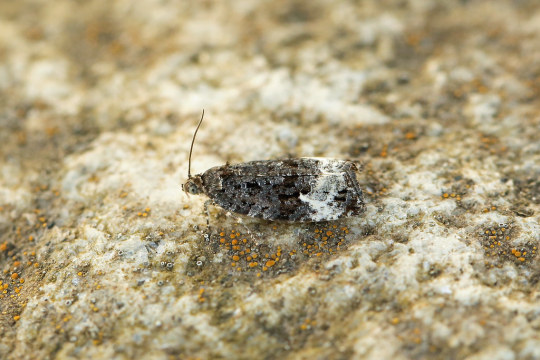
Sutherland long-cloak (Apotomis sauciana)
Photo by Nigel Voaden
#sutherland long cloak#greville's marble#apotomis sauciana#apotomis#olethreutini#olethreutinae#tortricidae#tortricoidea#apoditrysia#ditrysia#heteroneura#glossata#lepidoptera#insecta#hexapoda#pancrustacea#arthropoda#panarthropoda#ecdysozoa
4 notes
·
View notes
Photo
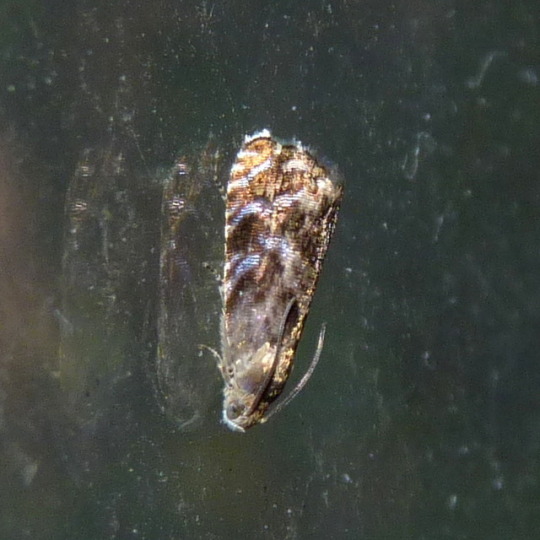
Lesser Appleworm Moth, Grapholita prunivora (by me)
#Lesser Appleworm Moth#Grapholita prunivora#Grapholita#Grapholitini#Olethreutinae#Tortricidae#Tortricoidea#Lepidoptera#Insecta#Hexapoda#Arthropoda#moth#insects#summer#Highland Park#Middlesex County#New Jersey#mine
9 notes
·
View notes
Text
Morphological Characteristics of Reproductive System of the Codling Moth Cydia Pomonella- Juniper Publishers
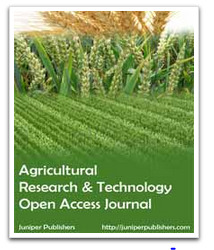
Forest management system as a component of ungulate pest management. Wild ungulates are an important site factor in forests and landscapes. Impacts of ungulates on forest vegetation and the effect of hunting systems are often investigated and discussed. In contrast, the impact of silvicultural systems on forest damage by ungulates is much less conscious. Therefore, in a long-term research program in Central Europe since the 1990ies two questions were investigated additionally, (i) in which way can forest management systems and landscape structures influence the interactions between ungulates and forest vegetation, and (ii) how can silvicultural practices modify the susceptibility of forests to damage by ungulates. The results showed a strong impact of these factors on the emergence of game damage to forests. Factors that are often underestimated in practice. Recommendations for a coordinated management of different land users to avoid ungulate damage to forest vegetation and to preserve biodiversity were made.
Keywords:Forestry; Silviculture; Ungulates; Game damage; Wildlife ecology; Integrated management
Introduction
The codling moth Cydia pomonella L. (Lepidoptera, Tortricidae) was originally found in the southeast regions of Europe and then spread to the apple tree Malus pumila Miller around the world. In China, it was first discovered in Korla city, Xinjiang province in 1953 [1,2]. It shows a remarkable ability to adapt to a variety of climatic and trophic conditions [3], even those in North America, South American, and South Africa. The codling moth is one of the main quarantine insect pests of fruit trees in the world (Jin 1997) and a key pest of the plant family Rosaceae. It causes a great damage to pome fruits (apple, pear and quince); [4] and occasionally apricots [2,5]. It has been also found in walnut orchards of the tree family Juglandaceae. Recently, it was reported to harm members of plant family Magnoliaceae [6].
The strong reproductive ability is one of the main reasons for their ability to cause serious damages [2]. Under laboratory conditions, each female adult can lay 12 to 345 eggs [7-10]. The eggs were always laid in fruits, as well as on leaves and twigs of trees, rarely on petioles or stems because of their oviposition behaviours [5]. Therefore, the egg mortality is low (4.7-6.9%) in integrated control orchards due to unviability to nature enemies and other animals [5], causing serious fruit dropping and rotting by the larvae feeding on fruits [11], (Du et al. 2012). The morphological characteristics of reproductive systems are of significance to predict the emergence period and population trend, and to determine the optimum timing for pest control and to identify species [12-16], especially in the cases of Lepidoptera pests, such as Grapholita molesta [17], Palumbina spp. [12], Spodoptera exigua [12]. Besides, insect genitalia are often species-specific, and their structures are often more divergent among closely related species than other structures such as legs, antennae, and eyes [18], which make genitalia more useful in distinguishing closely related species [18].
Allman (1930) and Wiesmann (1935) [19, 20] described the gross morphology of the external and internal reproductive systems of C. pomonella females. Williams (1941) compared the structure of the codling moth spermatophore with those of other Tortricoidea species. Ferro and Akre (1975) [4] illustrated both female and male reproductive systems of the codling moth Laspeyresia pomonella [4]. Since then, mostly studies have focused on their chemical control. There are very few reports about the reproductive characters of this species. Until 2018, the process of egg maturation and classification of ovary development in the codling moth were described and reported [21]. In the present study, the C. pomonella reproductive systems from a Chinese codling moth population in Gansu Province were dissected. The morphology of each parts was described for the first time in detail. The study aims to provide morphological information for identification and support for the prevention and prediction of the codling moth.
Methods and Materials
Codling moth colony
The codling moth Cydia pomonella was collected from an abandoned apple orchard in Wuwei City, Gansu Province of China. The larvae were reared in fruits, the emerged adults were reared with 10% honey water in Laboratory under the condition of 25±1℃ temperature, 75±5% relative humidity and a photoperiod of 16h light: 8h dark.
Reproductive system dissection and observation
The 1-2 d old female and male adults were used. The inner organ was prepared by putting the abdomen in Bouin’s fluid for 30 minutes in a centrifuge tube, and then kept in Ringer’s saline for dissection. The genitalia were treated by boiling with 10%NaOH for 5-10 min to remove all soft tissue, and then kept in 75% alcohol ready for observation.
The reproductive system was observed under Zeiss SteREO Discovery V12 stereoscopic microscope. The photographs were taken with Carl Zeiss CCD AxioCam MRc 5 digital cameras. All images were processed by using Adobe Photoshop CS6.
Results and Analysis
Male internal reproductive organs
The male internal reproductive organ consisted of a testis (Figure1: A-1), a pair of seminal vesicles (Figure1: A-2), a pair of vas deferens (Figure1: A-3), a ductus ejaculatorious duplex (Figure1: A-4) and a ductus ejaculatorious simplex (Figure1: A-5), a pair of accessory glands (Figure1: A-6). The testis is the main sperm productive structure and formed by two testicular follicles enveloped in the lavender adventitia. The seminal vesicles are constricted in the middle and swollen at apex. The vas deferens are the access to ductus ejaculatorious duplex for sperms. The ductus ejaculatorious simplex can be divided into four sections: the first section is transparent, thick and short; the second section is translucent, as thick as the first but longer; the third section is transparent and the longest one; the fourth section is narrowed at the base and then distorted at the connecting section with the aedeagus.
Male external reproductive organs
The male genitalia mainly consist of a pair of valvae (Figure 2A-6 and B), a pair of aedeagus (Figure 2A-3, D and E) and other accessory structures. The valvae are ear shaped. The end of the valvae (Figure 2: A-6) is round, densely covered with thin and irregular hairs and finger like ventral process (Figure 2: A-7). The uncus (Figure 2: A-5) is short. The aedeagus is cecum-like with strong sclerotization and seven cornuti dorsally. Five of the cornute are close to the apex and the other two are in the middle (Figure 2: E). The juxta (Figure 2: F) is V-shaped and membranous.
Female internal reproductive organ
The female internal reproductive organ (Figure 3A) consists of a pair of ovaries (Figure 4: A-2), a pair of lateral oviducts (Figure 4: A-4), a common oviduct (Figure 4: A-5), a bursa of accessory glands (Figure 4: A-8), accessory glands (Figure 4: A-9), a spermathecal (Figure 4: A-10) and a spermathecal gland (Figure 4: A-11). The ovaries are symmetrical, and each ovary has four polytrophic ovarioles. The ovarioles twin together through tracheoles, merge at the base, then incorporate into lateral oviducts. The common oviduct is thin and straight initially, becomes widen and short afterward. The ovarioles (Figure 4: A-3) are divided into four parts: terminal filament (Figure 4: A-1), germarium, vitellarium and pedicel. The two accessory glands are connected with the bursae of accessory glands.
Female external reproductive organs
The female external reproductive organs (Figure 3B) consist of a corpus bursa (Figure 5: A-1), a ductus bursa (Figure5: A-2), papillae anales (Figure5: A-4), a ductus seminalis (Figure5: B-5), antheridium (Figure5: B-6) and accessory structure, apophyses anteriores (Figure5: C-7), apophyses posteriors (Figure5: C-8), and two horn-shaped signa (Figure5: D-9). The ductus bursae (Figure 5: A-2) is short, the ostium bursae (Figure5: A-3) is flat and broad. The length of apophyses anteriores is longer than that of apophyses posteriores. Both anus and oviporus have an opening between the papillae anales. The antheridium (Figure5: B-6) is oval and milky and located in the section of the ductus seminalis.
Disscussion
The morphological differences of insect reproductive systems mainly lie on the shape and number of ovary and testis [18, 22], the presence of antheridium, the shape of corpus bursae and signum. In our study of the codling moth, the two testicular follicles are closely connected to each other like a single organ and enveloped in the lavender adventitia, which is similar to those of most species in Lepidoptera [23-26], but inconsistent with the structure of Heliothis zea [27,28] and Papilio xuthus [29]. Moreover, the corpus bursae of the codling moth have a pair of horn-shaped signa instead of cysticerci, but the corpus bursae have cysticerci in Pyrausta nubilalis, Catopsilia Pomona and Colias fieldii [25, 26, 30]. In addition, some species such as Lipographis and Etielloides have no signa [31,32]. Wiesmann (1935) [20] illustrated the accessory gland reservoir being bifurcate, but no reservoirs were bifurcate in our study and nor in Ferro’s sample [4].
In addition, the aedeagus of the codling moth has 7 cornuti, among which five are close to the end and two are in the middle. But Ferro (1975) [4] described 6 large cornuti (spines) that radiate from the endophallus and evert from the aedeagus into the female cervix bursae during copulation. It is probably due to different geographical populations or may be because of intraspecific variations. Moreover, in the process of sexual maturation, we observed that an antheridium is formed in the section of ductus seminalis between corpus bursae and ostiumbursae. Originally, the antheridium is small and transparent, then it becomes large, milky color, and finally turn into large, yellowish color. This feature can also be found in those species in the genus Eurema but missing in other genera of subfamily Coliadinae [26]. In the present study, we have clarified the structural characteristics of both internal and external reproductive organs of the codling moths of a Chinese population. We will conduct the spermatogenesis in the near future in order to study futher the reproductive isolation mechanism and reproductive biology of the codling moth, and to provide more guidance for integrated control them [33-36].
To know more about
Journal of Agriculture Research-https://juniperpublishers.com/artoaj/index.php
To know more about open access journal publishers click on Juniper publishers
0 notes
Photo
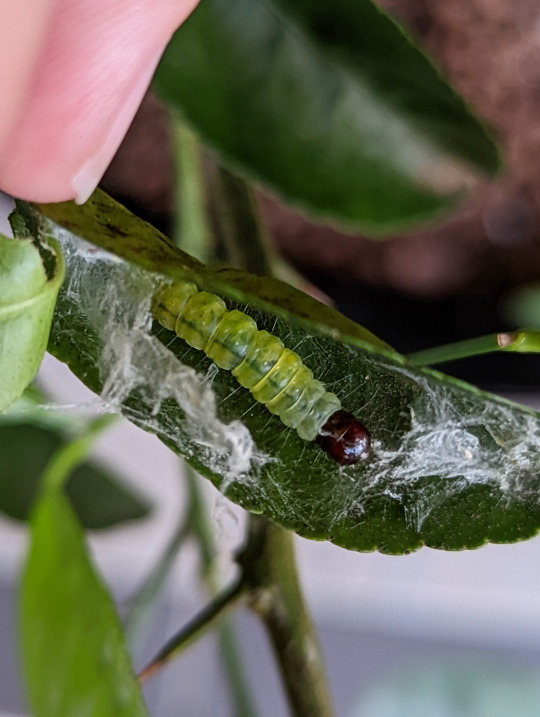
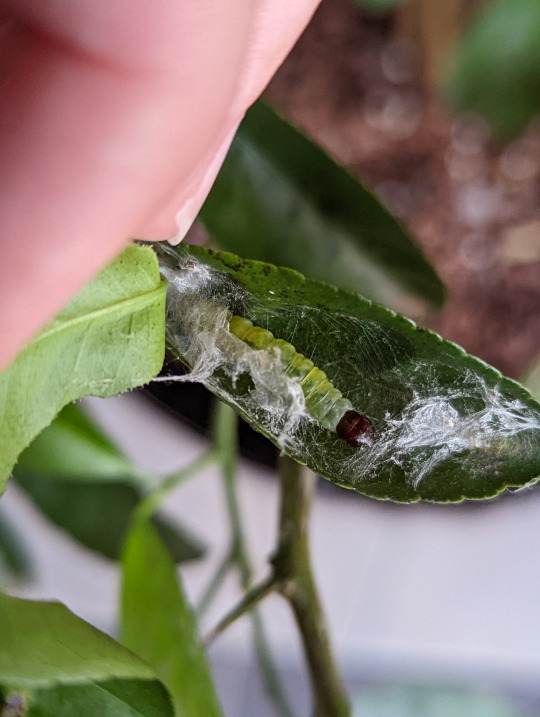

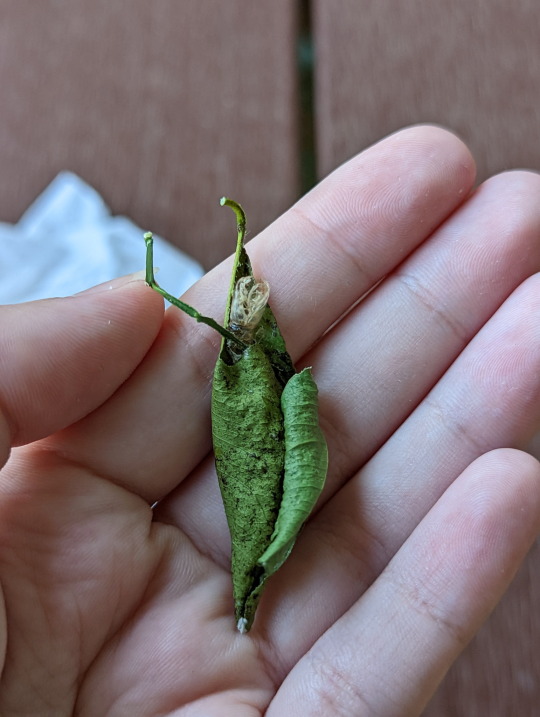
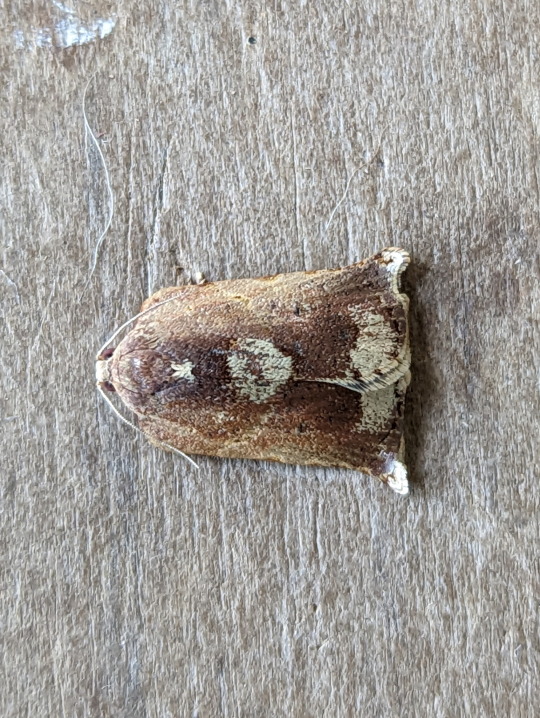
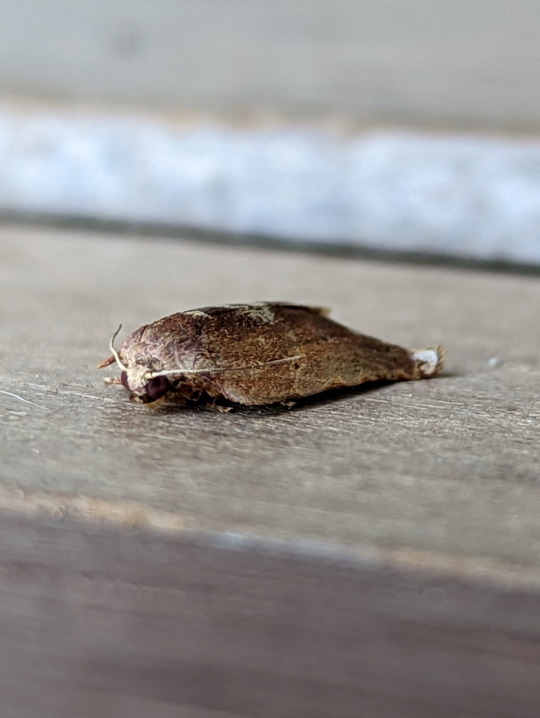
𝐒𝐔𝐂𝐂𝐄𝐒𝐒𝐅𝐔𝐋 𝐂𝐀𝐓𝐄𝐑𝐏𝐈𝐋𝐋𝐀𝐑 𝐑𝐀𝐈𝐒𝐄!
Yet another successful raising, this time a bell moth! Uncertain about the species for this one, but I recon it’s either in the Anisogona or Homona genus.
Unidentified, Anisogona / Homona species, Tortricinae
Foodplant: Citrus species
08/11/22 - 17/08/22
#Anisogona#Unidentified#Homona#Tortricinae#moths#bell moths#moth#mothblr#moths tw#mothcore#lepidoptera#Lepidopterology#caterpillars#caterpillar#Tortricidae#Tortricoidea#hand-raised#pupae#Larval stage#larvae#pupa#cocoon#cocoons & cases
48 notes
·
View notes
Photo

I believe these are parasitized Tortricidae eggs,
though Stink and Shield bugs can have similar looking eggs.
Unidentifiable, Tortricoidea
01/06/22
#parasitism#tortricoidea#eggs#Tortricid Leafroller Moths#Tortricidae#Lepidoptera#Lepidopterology#bugs#bugs tw#bugblr#insects tw#insectblr#entomology#insecta#Arthropods#Arthropoda
17 notes
·
View notes
Photo
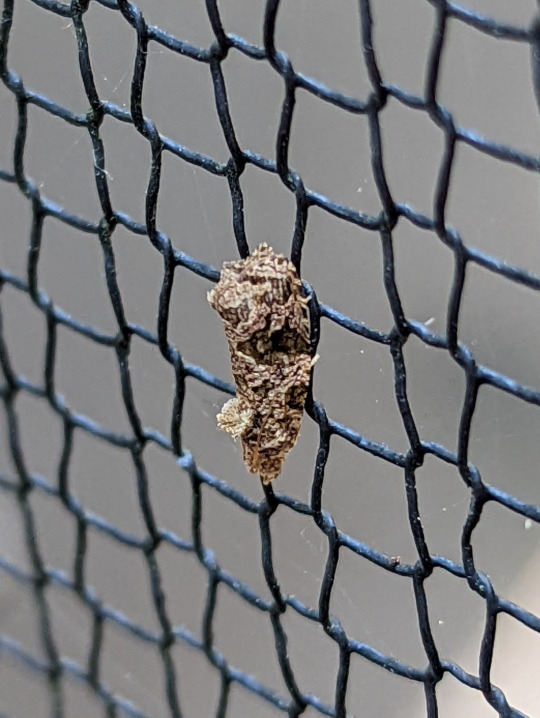
Beautiful Tortricid moth pretending to be gecko droppings.
Tortricidae
28/05/22
#Tortricidae#moth#moths#mothblr#mimicry#lepidoptera#Tortricoidea#Lepidopterology#bugblr#bugs#bugs tw#bug#insects#insectblr#insects tw#entomology#Arthropods#Arthropoda#insecta
6 notes
·
View notes
Photo
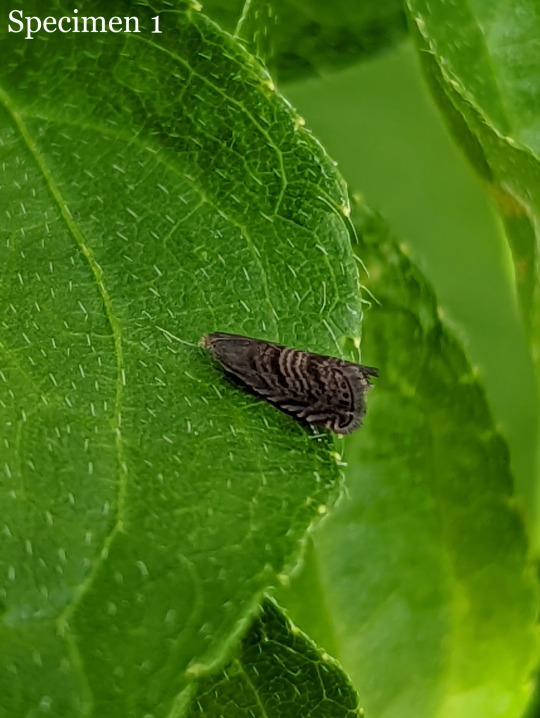

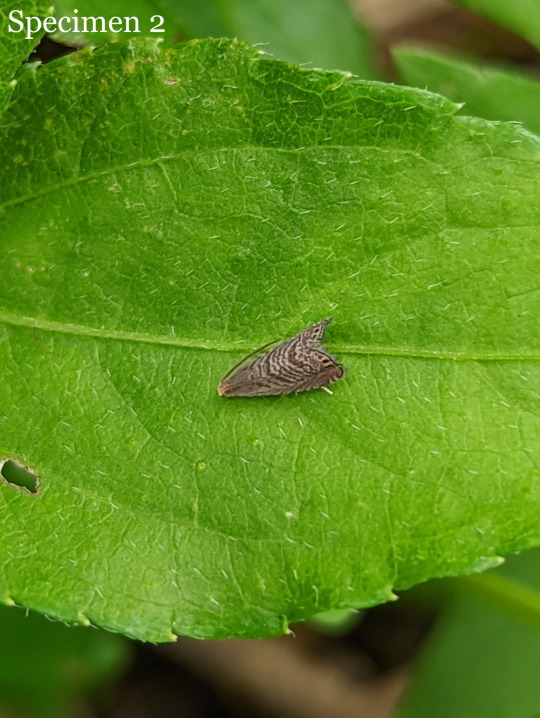
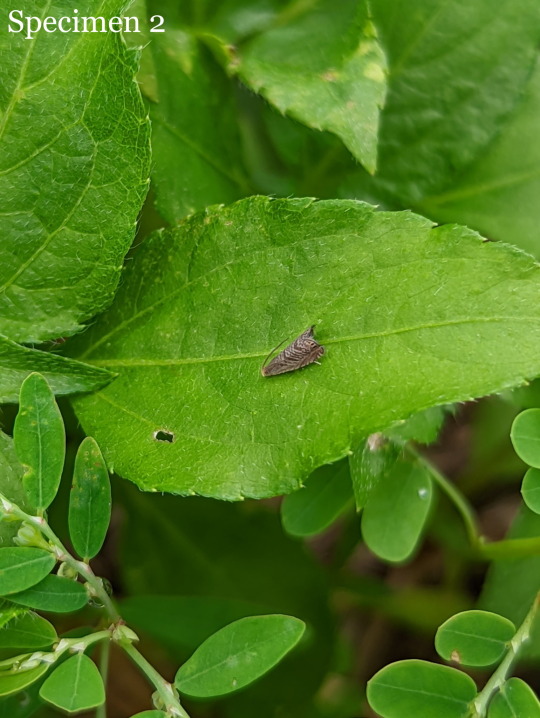
Two Torticid moths found in a field.
Possibly Grapholita conficitana, or others in tribe Grapholitini
20/05/22
#Grapholita conficitana#Grapholitini#Grapholita#Olethreutinae#Tortricidae#Tortricoidea#leaf rollers#Lepidoptera#moths#mothblr#mothcore#moths tw#entomology#bugs#bugblr#bugs tw#bug#insects#insecta#insectblr#insects tw#insect#Arthropods#Arthropoda#nature#nature photography
3 notes
·
View notes
Photo

Tortricid moth eggs.
Tortricidae
18/12/21
#Tortricidae#tortricoidea#eggs#lepidoptera#bugs#bugs tw#bugblr#insects#insecta#insect#insectblr#insects tw#entomology#Arthropods#Arthropoda
33 notes
·
View notes
Photo
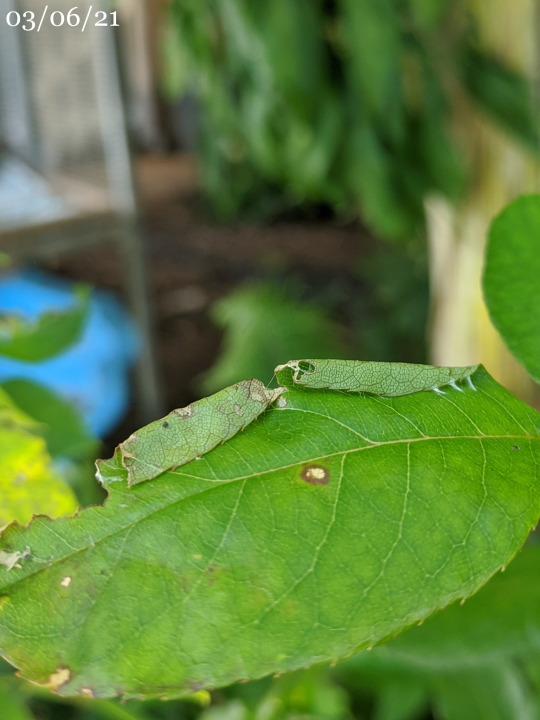


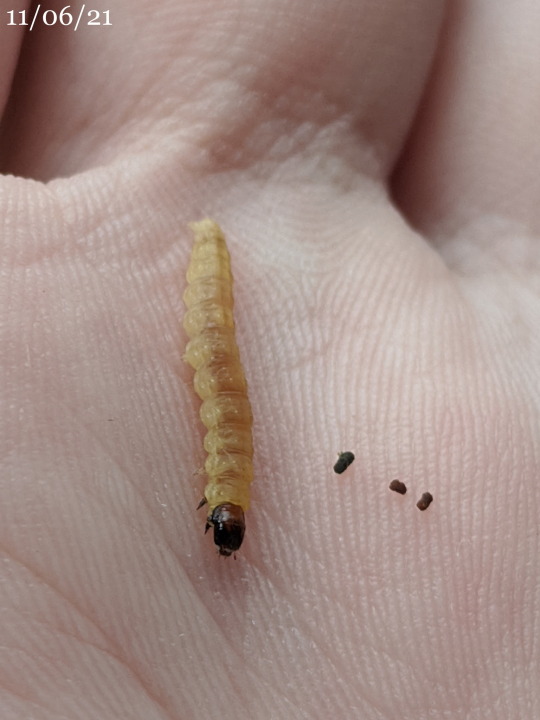
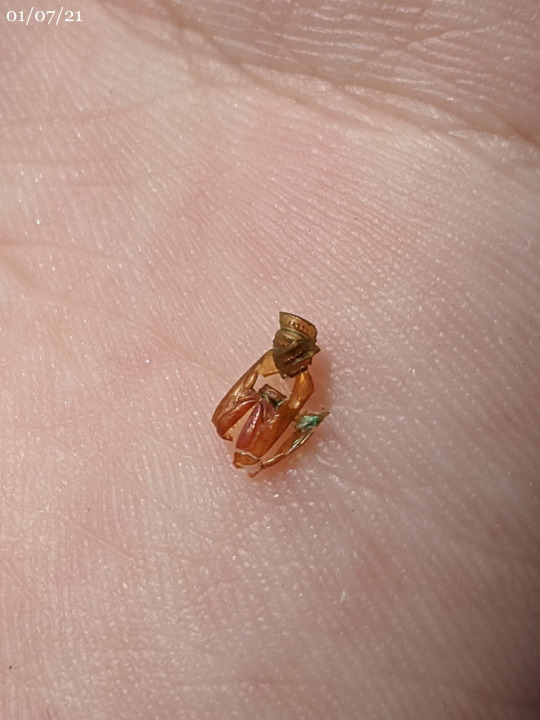
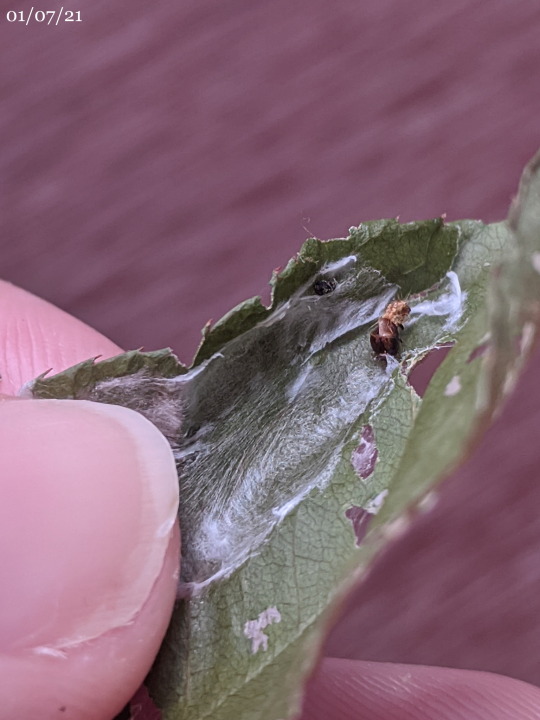


The raising of Dudua aprobola
Foodplant
Rosa × alba, “White Rose of York”
Other foodplants
Taxonomy
Family: Tortricidae, “Tortricid leaf rollers” > Olethreutinae
#Dudua aprobola#Olethreutinae#tortricid leafroller moths#leafrollers#moths#moth#mothblr#mothcore#moths tw#Tortricidae#Lepidoptera#Tortricoidea#Dudua#Olethreutini#adult form#caterpillar#caterpillars#raising#bug keeping#bugs#bugblr#bugs tw#bug#insect#insects#insecta#insects tw#insectblr#Entomology#lepidopterophobia
10 notes
·
View notes
Photo
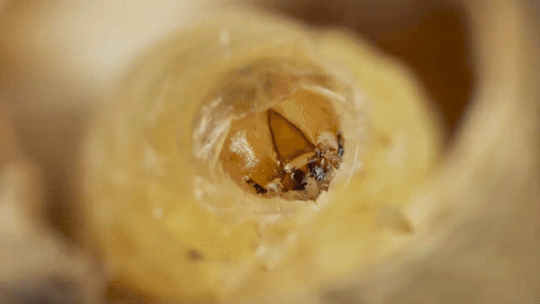
Huggable Grubbable ♥
-{ x }-
#not my work#gifs#deep look#gif#caterpillar#caterpillars#larvae#larval stage#tortricoidea#tortricidae#bell moths#leaf rollers#mexican jumping bean#Cydia saltitans#grub#grubs#cute#cute animals#bugs#bugblr#bugs tw#insect#insects#insectblr#insects tw#insecta#chonk#arthropods#arthropoda
18 notes
·
View notes
Photo
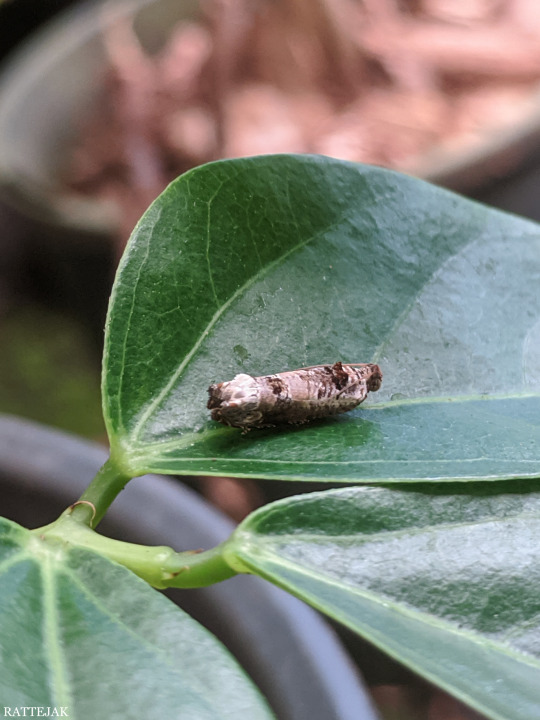

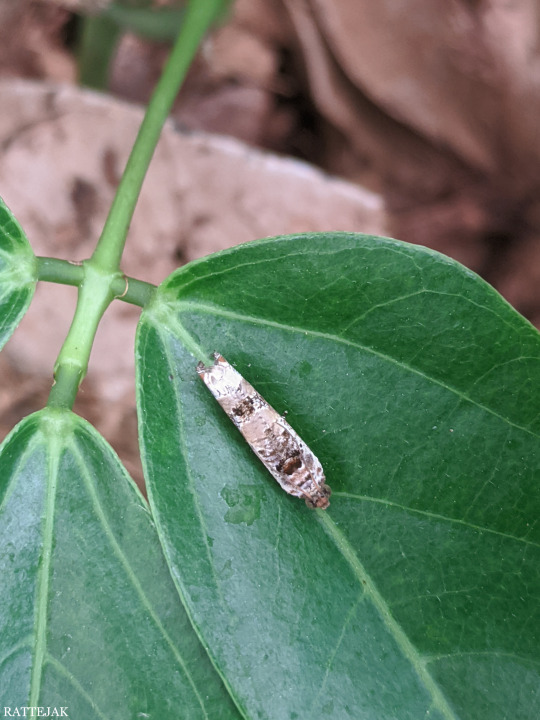
✥ Dudua aprobola
——————————————————————————————————–
Personal Observations
The adult moth is usually found sitting in the centre of a leaf, presumably trying to resemble bird droppings or bark.
I have yet to observe the caterpillar.
Taxonomy
Lepidoptera - Tortricoidea - Tortricidae - Olethreutinae - Olethreutini - Dubua
Known Foodplant/s
Anacardium occidentale “Cashew”, Mangifera indica “Mango”, Nephelium litchi “Lychee”, Psidium guajava “Guava”, Rosa “Roses”, Lantana camara “Lantana”, Dahlia “Dahlia”, Polyalthia longifolia “Mast tree”, Lagerstroemia flos-reginae “Queen’s Flower
Territory
Cook Islands, Hong Kong, India, New Guinea, Australia (NT, WA, QLD, NSW)——————————————————————————————————
( Source ) this website has done more work in preserveing Lepidoptera information than I could ever dream of doing myself. Do support them ♥
Last edited 09/04/21
#Dudua aprobola#Temnolopa metallota#tortricidae#tortricoidea#Olethreutinae#Olethreutini#adult form#bell moths#leaf rollers#moths#moths tw#mothblr#mothcore#moth#bugs#bugblr#bugs tw#bug#insect#insects#insecta#insectblr#insects tw#nature#Entomology#Lepidoptera#lepidopterophobia#lepidopterology#Dudua#index entry
8 notes
·
View notes
Photo

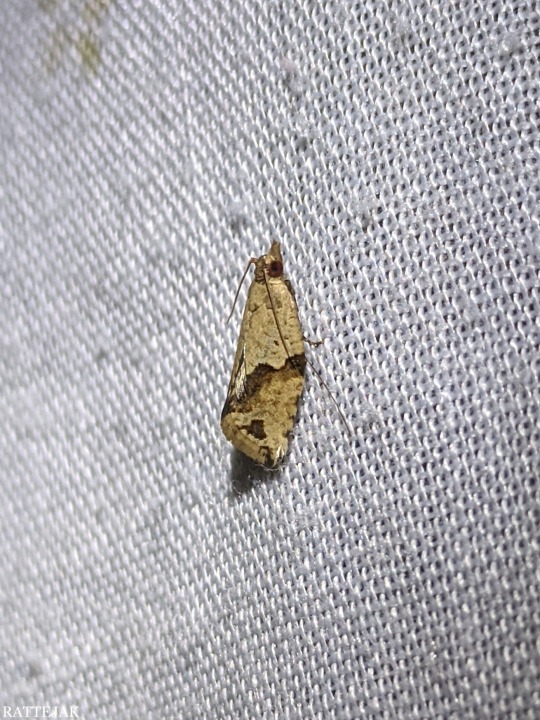
✤ Neocalyptis molesta - tortricidae
(male moths are a little smaller than the females)
#Neocalyptis molesta#Neocalyptis#tortricidae#tortricoidea#tortricinae#archipini#bugs#bugs tw#bugblr#bug#insects#insect#insecta#insectblr#insects tw#Entomology#moth#mothblr#moths#moths tw#bell moths#Tortrix molesta#leaf rollers#lepidopterophobia#lepidopterology#arthropoda#arthropods
8 notes
·
View notes
Photo
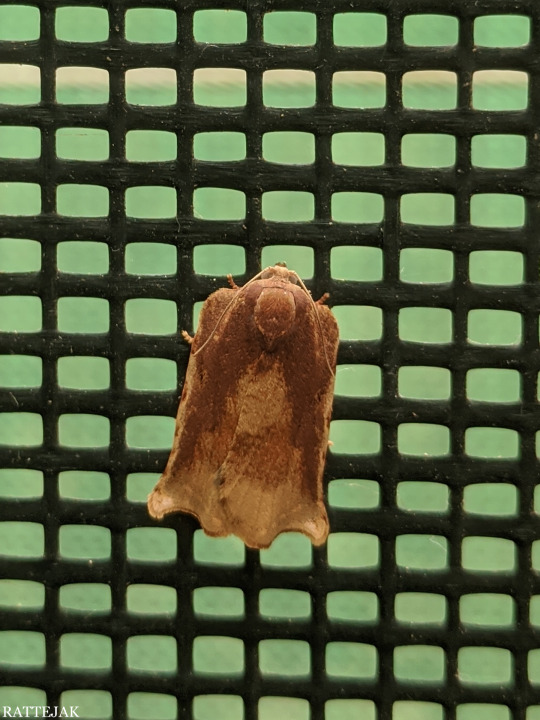
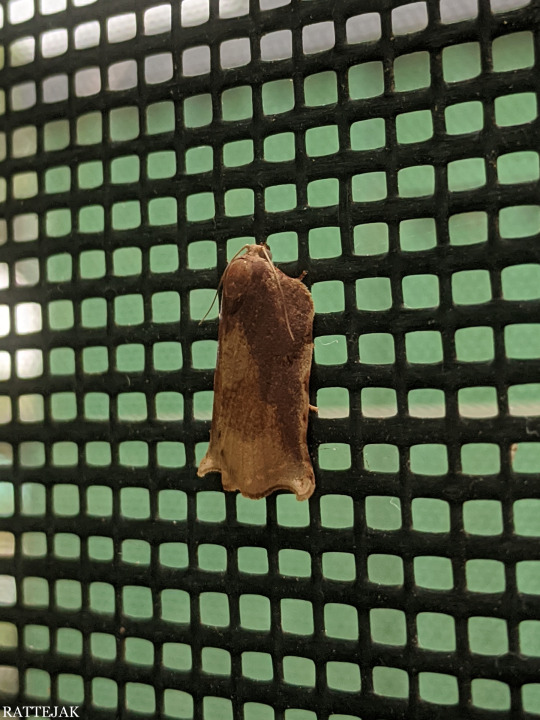
✤ Homona mermerodes (Female) - Tortricidae
(Food plants include: Bulbophyllum, Oncidium species)
#Homona mermerodes#Homona#female#tortricidae#tortricinae#tortricoidea#ARCHIPINI#moths#mothblr#moth#moths tw#insecta#insect#insects#insects tw#insectblr#bug#bugs#bugblr#bugs tw#Entomology#lepidoptera#lepidopterophobia#lepidopterology#adult form#arthropoda#arthropods
5 notes
·
View notes
Video
youtube
Another favourite of mine from Deep Look ♥
#mexican jumping bean#Cydia saltitans#frijoles saltarines#Grapholitini#tortricidae#Tortricoidea#Lepidoptera#lepidopterophobia#lepidopterology#bugs#bugblr#bugs tw#insect#insects#insectblr#insects tw#insecta#entomology#moths#mothblr#moths tw#mothcore#larvae#larval stage#leaf rollers#bell moths#arthropods#arthropoda
2 notes
·
View notes
Photo
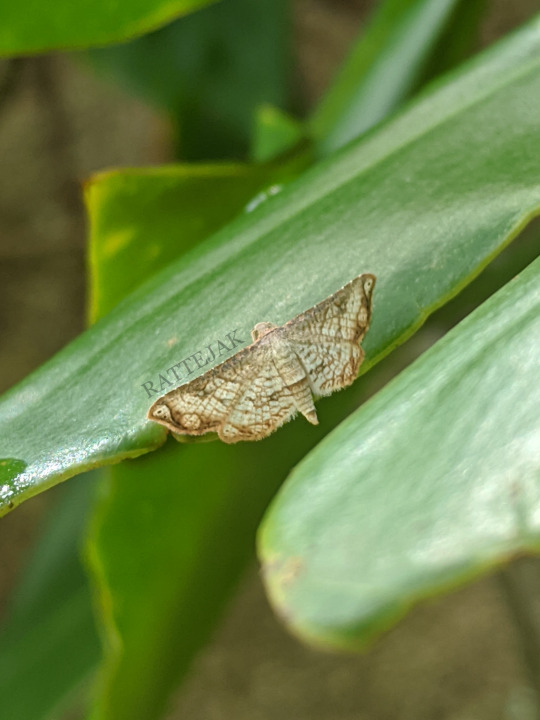

Index Entry - Hypolamprus bastialis
This is actually the first Picture-winged leaf moth I’ve ever found! (Ignoring all the times I would’ve blindly walked pass them as a kid)
Taxonomy: Superfamily Tortricoidea; Family Thyrididae “Picture-winged leaf Moths”; Subfamily Siculodinae; Genus Hypolamprus
Food plant/s: Unknown
Occupation/Territory: Australia (QLD only), New Guinea, Seram Islands, Singapore
Caterpillar description: The caterpillar has yet to be found.
29/01/21
#Pyralis bastialis#Hypolamprus bastialis#Tortricoidea#Thyrididae#Siculodinae#Hypolamprus#picture-winged leaf moths#moths#moths tw#mothblr#moth#Lepidoptera#lepidopterophobia#lepidopterology#bugs#bugblr#bugs tw#insecta#insect#insects#insects tw#insectblr#bug#Entomology#adult form#adult moth#index#index entry#Unknown species#arthropoda
2 notes
·
View notes